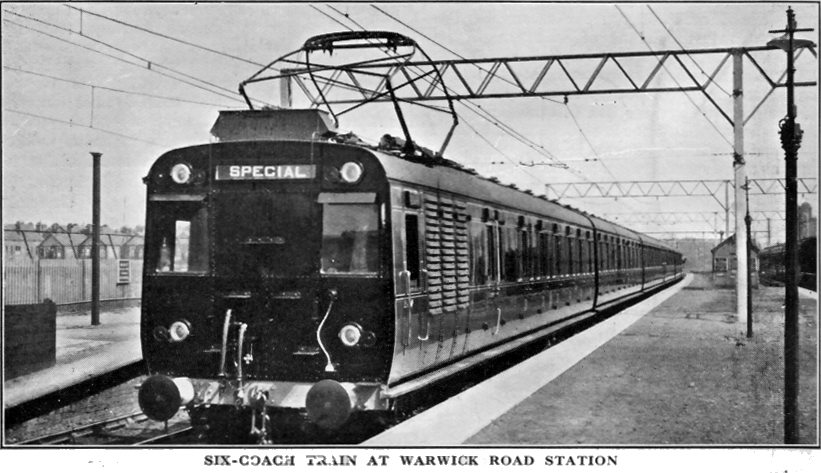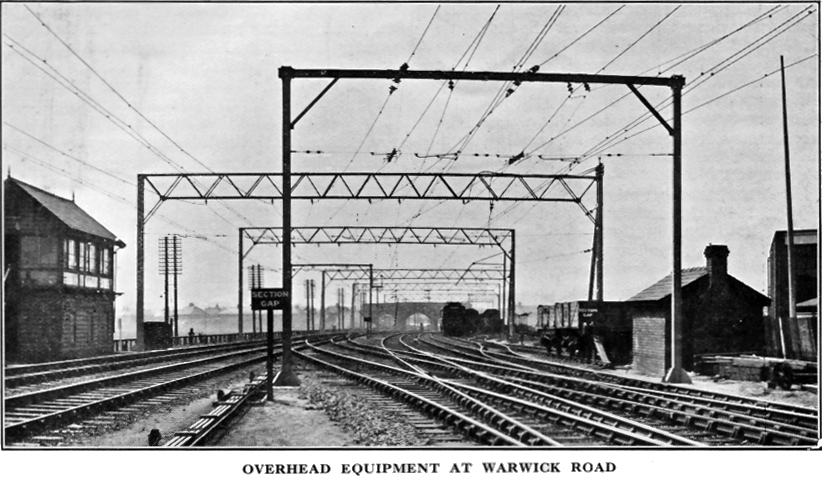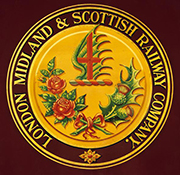

This site uses non-intrusive cookies to enable us to provide a better user experience for our visitors. No personal information is collected or stored from these cookies. The Society's policy is fully explained here. By continuing to use this site you are agreeing to the use of cookies.
By A. K. L.
[as reported in the April 1934 edition of the “in-house” LMS Magazine.]

THE Manchester South Junction and Altrincham Railway, locally known as the "South Junction," dates back to the early days of our "iron roads." Manchester, being a large and important city, had several railways serving it, and an agitation arose for a line to connect these different railways, as their termini were in various parts of the town. There were many projects, and by 1844 the question became acute. In those days London Road station (Manchester) was the terminus of the Manchester & Birmingham line, and of the Sheffield & Manchester line. Both these railways were cut off from the Liverpool & Manchester Railway, which carried a large traffic destined for their systems. A proposal was put forward, therefore, to construct a line from London Road to connect with the Liverpool & Manchester at Salford (Ordsall Lane), and this was possibly the first railway line to be built through the heart of a large town.
At that time it was thought that the Manchester & Birmingham and Sheffield & Manchester Railways would amalgamate and the new line would be under one ownership, but this was not destined to be the case.
In 1845 the Liverpool & Manchester was absorbed by the Grand Junction, and the following year saw the Manchester & Birmingham Railway as well as the Grand Junction amalgamated with the London & Birmingham Railway as the London & North Western Railway. The South Junction Railway was then under construction and so became a joint line under the ownership of the L. & N.W. Railway and the M.S. & L. Railway, which latter was an amalgamation of various lines which took place in 1846, but which later changed its name to the Great Central Railway.
The construction of the joint line was authorised by an Act of Parliament passed on July 25, 1845. A line from Altrincham to Manchester had previously been authorised under the name of the Birkenhead, Manchester & Cheshire Junction Railway, but the promoters of this line joined forces with the promoters of the M.S.J. & A. line and thus much unnecessary expense was saved, the former Company making use of the "South Junction" instead of building an almost parallel line of their own.
The capital of the M.S.J. & A. Company was fixed at £400,000 and £123,333 loans. The two promoting companies each subscribed £175,000 of this capital, and Lord F. Egerton, a trustee of the Bridgewater Canal, subscribed the remaining £50,000. This canal runs parallel to the railway for the greater part of its course, and as there was a frequent passenger service of "swift fly boats," locally known as "packets," running on the canal, the two railway companies considered that the Bridgewater Trust could, with advantage, be approached to take some interest in, and to co-operate with, the new line, and it was finally agreed that upon their subscribing £50,000 and transferring free any land in Manchester held by them and required by the railway, the keen competition which would take place between the "fly boats" and the trains for the Manchester passenger traffic should be avoided by the withdrawal of the "fly boats" on the opening of the railway line, and this was duly done.
There were nine directors on the board of the Joint Line, each partner haying three, although the Bridgewater interest was so much smaller than that of the railways, and this led in later years to the railway companies buying out the Bridgewater interest.
The "first sod" was turned at Castlefield in January, 1846, but little progress was made, the capital being found to be inadequate. In the L. & M. Act of 1848 additional capital of £250,000 was authorised, and from that time better progress was made with the line from a temporary terminus at Oxford Road to Altrincham. Further capital had to be obtained from time to time, the sum eventually reaching £1,060,000.

Oxford Road station was constructed on a high level on the site of the old gas works. and the line thus passed above the many streets of the town, this section being on arches throughout. About half-a-mile down the line. Knott Mill station was constructed with a flight of steps on each side of the line, and was, for many years, the object of much unfavourable comment. It was demolished and the present pleasing building erected some thirty-seven years ago.
The line then passed by four bridges over two roads and the Bridgewater and Rochdale canals, shortly afterwards branching away from the "Junction" line which led to Salford. The Altrincham section was easy to construct, being practically on the level of the land, the only works being the necessary bridges to carry roads over it, and a short tunnel, the only one on the line, under the Chester Road at Old Trafford, the first station on the Altrincham section and placed just two miles from Oxford Road station.
Edge Lane (now Stretford) came next, one and a-half miles beyond. Between Stretford and Sale Moor station (now Sale and Ashton-on-Mersey) the line crosses the River Mersey-the County boundary-by a bridge, the original of which was built on Fairbairn's plan of tubular girders, then quite a novelty. Timperley was the next stopping place (one and three-quarter miles) and then Altrincham, the terminus, which was one and a-quarter miles from Timperley, or exactly eight miles from Oxford Road. Since that date four other stations have been added, the first at Brooklands between Timperley and Sale, the next opposite the Lancashire County Cricket Ground at Old Trafford and originally called "Cricket Ground," but since renamed Warwick Road, and finally two halts known as Navigation Road (Altrincham), and Dane Road (Sale), which came into being when electrification of the line was undertaken in 1932.
The shorter "Junction" line from London Road to Ordsall Lane, via Oxford Road and Knott Mill, connected every railway having its terminus in Manchester with every other. The arrangement was that a direct service of trains should be run between Liverpool and Leeds by way of Ordsall Lane and Oxford Road, and this service was in operation for many years. At present the line is used for goods traffic.
The Junction line was built 30 ft. above road level, and flat girder bridges were originally to be used. In fact, some were partially constructed when, in consequence of the fall of a similar bridge at Chester, this design was abandoned and arched bridges of superior workmanship were substituted, averaging about 70 ft. span, though the one over the Rochdale Canal was 105 ft. A brick bridge with a span of 80 ft. built over the branch canal was, at that time, unique. In the construction of the viaduct 300,000 cu. ft. of stone, 50,000,000 bricks and 3,000 tons of cast and wrought iron were employed, there being 224 arches in all. No wonder the promoters had to apply for more capital.
The Altrincham line was opened to the public in July, 1849, the first train from Manchester starting at 8 a.m. lightly loaded, whilst that from Altrincham, also leaving at 8 a.m., carried 65 passengers. The service averaged one train per hour from 8 a.m. to 9 p.m. No formal ceremony marked the public opening, the promoters and their workmen having previously run a trial trip over the rails accompanied by enthusiastic demonstrations at each station on the line and concluding with a procession through the town, led by the Stretford Temperance Band, to the Unicorn Hotel, where a welcome awaited the party. A trip into the country, followed by dinner at the Hotel, brought the day to a close.
Considerable developments have taken place since then and connections have been made with the Cheshire Lines (previously Cheshire Midland Railway) to Chester and Stockport, and with the L M S (L.N.W.R.) line to Warrington and Liverpool. The number of trains passing over the lines daily is now five times as great as in 1849, and the passengers carried, in addition to numerous season ticket holders, exceed 5,000,000 annually. The line is one of the most popular residential lines in the Manchester district and building is taking place rapidly all along its course.
The use of the block system was introduced on this line in 1872, whilst another important step was the adoption of the Smith vacuum brake about 1875, this subsequently being replaced by the automatic vacuum.
The first ticket issued was purchased by Mr. Warburton, of Vale Farm, Bowden, who prior to the opening of the Railway, used to drive to Manchester by horse and fly on Mondays, returning on Saturdays.
We are indebted to Mrs. Silverwood Johnson and to Mr. Fallas for assistance with historical facts concerning the line.
Site contents Copyright © LMS Society, 2026

January 6th, 2026
Site contents Copyright © LMS Society, 2026